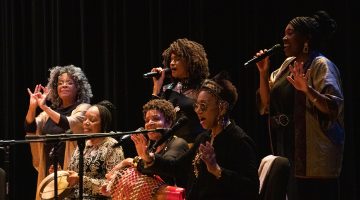WARNING: SPOILERS AHEAD:
Delia Owens shocks the book world with 368 pages of raw feelings and pure trauma.

Book Cover for Delia Owens’s “Where the Crawdads Sing”.
In her stand-alone novel, “Where the Crawdads Sing”, Owens writes a murder mystery, two completely opposite love-stories and a story enwrapped in abandonment and loneliness.
The plot follows Kya Clark, also known as the “Marsh Girl” through the adventure of raising herself in the wild since the age of seven. The story, set in North Carolina in 1952, discusses Kya’s struggles as everyone she cares about leaves her. The author periodically skips over years to mark monumental moments of love, reunification, pain and loss in Kya’s world.
The best part of the book—there’s a murder mystery to be solved but Kya, unfortunately, is the prime suspect.
Chase Andrews is loved by the town of Barkley Cove, so when his corpse turns up deep in the marsh during the year of 1969, fingers are immediately pointed to the woman who knows the area the best.
Every other chapter, or so, is a change in settings, although all chapters stay consistently in the third person point of view. Some scenes follow the deputies as they try to uncover the truth behind Chase’s death, whilst others follow the events of Kya’s life as she develops into a smart, independent woman.
Kya, at a young age, slowly loses her mother and older siblings, one by one, until it is just her big brother Jodie left. He abandons her too, leaving her all alone with Pa, their drunk, abusive father.
Soon after Kya’s father leaves, she slowly finds ways to make money and survive on her own in the marsh. People come out every once in a while, trying to make her go to school, but Kya’s mind is set on staying in the home which holds the dearest remaining memories of her family.
Along her adventure, Kya makes friends with a Black couple, known as Jumpin’ and Mabel, who help her out by giving her clothes and people to talk to.
Something that is very powerful about this connection in the book is that during these years, people of color were going through the heated years of segregation, so the idea Owens portrays here is to the White community, Kya is considered “White trash” and therefore doesn’t belong with them. As a result she is “associated” with the Black community in their minds, meaning she is lesser than them regardless of her race.
And yet, Owens does a splendid job of showing the compassion of Mabel and Jumpin’ welcoming her, as if she was their family. The whole connection of Kya to this couple is a moving and powerful conveyance that the author highlights exceptionally throughout the book, especially during this time period. Even Kya at one point refers to Jumpin as the closest thing she had to a real dad, which definitely had some readers reaching for a box of tissues. In this sense, Kya was better off with Jumpin’ and Mabel by her side instead.
As Kya grows older, she also makes friends with Tate Walker who is about four years older than her. Tate comes to visit Kya and teaches her how to read and write. Soon enough, a connection develops between them and they fall in love. Despite their attraction to one another, there is an age gap—and not a legal one.
When the talks of sex come up between Kya and Tate, she is 15 at the time and Tate is 19. The whole time readers probably wanted them to fall in love and be together, but as soon as Owens got to this scene, it was like slamming on the brakes and getting hit with whiplash.
Tate should not have made a move on a girl who not only doesn’t know better, but especially on one so young, with so little experience with any sort of social issues outside of her secluded marsh.
Although, it is monumental to note that Tate stopped it even when he and Kya both wanted it because he knew he couldn’t morally compromise her when she was such a young girl. It is a low bar, but still a line that her next love interest, Chase Andrews did not quite meet.
After Tate leaves for college and doesn’t come back to say goodbye to Kya, she is completely broken. She was already abandoned by everyone she knew and loved and Tate knew that, but still left her behind. She walked around like a zombie, barely visiting Jumpin’ and Mabel and having little interaction with anyone but her plants and animals in the marsh.
Until the handsome player, Chase Andrews, sends his interest her way when she turns 19. He very aggressively sets his interest on her, immediately wanting to have sex with her on their first date. When he realizes Kya will run away from him before he has the chance, Chase promises her to take it slow. Then their love story begins, and yet is more of a sexual attraction conveyed between the two, not one that is as pure and genuine as it was with Kya and Tate.
That is until Chase gets engaged to another girl and breaks Kya’s heart, right around the same time as Tate comes home from college and begs for her forgiveness.
A lot for a 19-year-old Kya to take in all at once, but the maturity levels on how she handles each of these conflicts is phenomenal. You can really see how fast all of the people leaving her alone have allowed her to grow and harden into the strong, independent woman she now is.
One of the best little twists that Owens added to this novel was the publication of Kya’s work in the marsh. Ever since Tate began bringing her biology or science books he’d had in school, she investigated the marsh for a vast number of different organisms and species, before sorting them into a collection. When Tate returns and sees the details and expansion of the collection, he helps Kya get set up with an editor to help her publish her own biology books.
Soon enough, Kya is making real money and slowly improves her living style—an action that I’m proud to say she did all on her own. The success that Kya accomplished without the help of Chase Andrew’s money, Tate Walker’s love, nor her family’s encouragement shows just how courageous Kya is for reaching this level of accomplishment.
This is where the tears will start flying for the remainder of the book. Kya is reunited with her brother Jodie, learns the story of what happened to her mother, shows Jumpin’ and Mabel her newly published book and slowly begins to find her way through life again.
Out of the blue, comes conflict for Kya though. Chase comes back for Kya, wanting her to be his again, even though he is married, and tries to rape her. Luckily, Kya escapes, but not unharmed, and she is brought back to the times when her father had beaten her. This is when Kya promises herself to never let Chase, or any other man, lay another hand on her like her Pa had done.
Hence the blame of the murder conviction. Chase is found in a situation where his death could’ve been a murder or been an accident.
When the sheriff has enough evidence against Kya, he takes her into custody. The book leads readers through the entire court case as Kya lives two months in a jail cell and has to sit around the people that have always hated her, waiting for the jury to convict her for the murder of a man she’d once loved.
And yet, they don’t convict her. Kya is set free back into her home at the marsh where Tate finally finds his way back into her heart, letting them rekindle their love and grow old together.
Just when you think the book will have a happy ending, Owens surprises the readers by showing the aftermath of Kya’s death. Tate goes through the poems she wrote under a pseudonym and he discovers the poem, “The Firefly”.
Spoiler alert, Kya was the murder all along and she basically admits it in this final poem, which Tate burns after he reads it.
Owens’ process through the jail cell and court scenes is a true nail-biting feeling. The whole time I was convinced Kya didn’t do it and that it was someone else who hated Chase, or that it was an accident. When the jury didn’t convict her, I cheered because I thought it was an innocent woman that went free.
However, the point the author brings across in this book is that even though Kya was one of the victims throughout the whole story with every relationship she’d ever had, she was still never truly innocent. Owens wanted to show the audience that even someone so unassociated with society’s corruptive nature, was still subtly and unnoticeably affected by the polluted community that they lived in. Regardless of how far away she put herself from them, Kya was still a part of Barkley Cove.
This was certainly not a plot twist I was able to catch onto. Owens does a wonderful job of keeping Kya’s thoughts to herself in the third person point of view and allowing the readers to make up their own mind about her morality and her character.
“Where the Crawdads Sing” is a beautifully written novel that shows readers a candid picture of life that wasn’t solely based on the slow childhood to adulthood transition, but one that depicted Kya’s speedy coming of age, as well as, her process of maturing sooner than she wanted or expected.
The novel was published on Aug. 14, 2018, but is currently being adapted into a movie by Sony Pictures and is expected to hit theaters on June 24, 2022. Reese Witherspoon, who renounced this book as her September pick for her “Reese’s Book Club” platform back in 2018, is now the producer of this upcoming movie under her production company, “Hello Sunshine”. “The film will be directed by Olivia Newman … and will star Daisy Edgar-Jones, Taylor John Smith, Harris Dickinson, Michael Hyatt, Sterling Macer Jr. and David Strathairn,” according to The Wrap.
After finishing this enticing page-turner, the impatient wait for the movie release, next summer, is going to be an achingly long one.
Jaedyn Young can be reached at jaedynyoung@sagebrush.unr.edu or on Twitter @jaedyn_young3.











